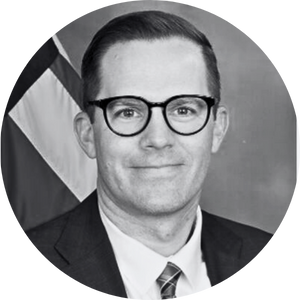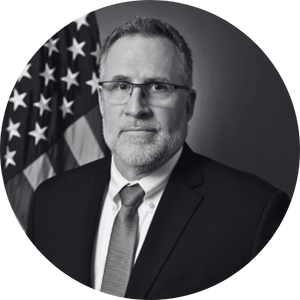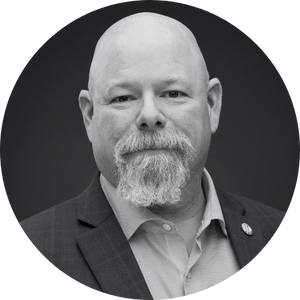Agenda
Times are subject to change.
Welcome to Cyber Summit!
Welcome to Cyber Summit!
With cyberattacks growing in scale and sophistication, the debate over government agencies taking a more offensive approach is more pressing than ever. Hacking back presents complex legal, ethical, and strategic challenges, but some argue it is necessary to deter adversaries and protect critical systems. This keynote will examine the evolving role of government in cyber offense, the legal frameworks shaping policy, and the potential consequences of a more proactive stance. Attendees will leave with a better understanding of the risks and benefits of offensive cyber strategies and how they may reshape national security in the years ahead.
With cyberattacks growing in scale and sophistication, the debate over government agencies taking a more offensive approach is more pressing than ever. Hacking back presents complex legal, ethical, and strategic challenges, but some argue it is necessary to deter adversaries and protect critical systems. This keynote will examine the evolving role of government in cyber offense, the legal frameworks shaping policy, and the potential consequences of a more proactive stance. Attendees will leave with a better understanding of the risks and benefits of offensive cyber strategies and how they may reshape national security in the years ahead.

Todd Hemmen
Section Chief, Cyber Technical and Analytics Operations SectionFBI
Underwriter

Join Veeam and Pure in this engaging 15-minute session as we tackle the critical challenges federal agencies face in implementing Zero Trust initiatives. We will share firsthand insights from our work with various federal customers, highlighting the common obstacles encountered and proven strategies for overcoming them.
Additionally, we will discuss the evolving landscape of cyber resilience, focusing on essential aspects such as disaster recovery, business continuity, and data protection. As agencies modernize their approaches to operational uptime, we will outline what "good" looks like in today’s complex cyber environment, moving beyond traditional RPOs and RTOs to adopt a comprehensive strategy that enhances both cybersecurity and operational effectiveness.
Join Veeam and Pure in this engaging 15-minute session as we tackle the critical challenges federal agencies face in implementing Zero Trust initiatives. We will share firsthand insights from our work with various federal customers, highlighting the common obstacles encountered and proven strategies for overcoming them.
Read More
Greg Carl
Principal TechnologistPure Storage

Mark Bentkower
VMCE, CISSP, Principal Technologist, AmericasVeeam Software

The federal cybersecurity workforce is evolving to meet new challenges, balancing shifting budget priorities with the need for top cyber talent. As agencies navigate hiring constraints, workforce reductions, and complex recruitment processes, finding and retaining skilled professionals remains a key priority. This fireside chat will explore innovative solutions for growing and sustaining a strong cyber workforce, including new hiring pathways, upskilling initiatives, and public-private partnerships. Attendees will gain actionable strategies for navigating hiring challenges and ensuring their agencies can attract and retain the talent needed to protect critical systems.
The federal cybersecurity workforce is evolving to meet new challenges, balancing shifting budget priorities with the need for top cyber talent. As agencies navigate hiring constraints, workforce reductions, and complex recruitment processes, finding and retaining skilled professionals remains a key priority. This fireside chat will explore innovative solutions for growing and sustaining a strong cyber workforce, including new hiring pathways, upskilling initiatives, and public-private partnerships. Attendees will gain actionable strategies for navigating hiring challenges and ensuring their agencies can attract and retain the talent needed to protect critical systems.

Patrick Johnson
Director, Workforce Innovation DirectorateOffice of the Deputy CIO for Resources and Analysis, Department of Defense (DoD) CIO

David DiMolfetta
Cybersecurity ReporterNextgov/FCW
Underwriter

Government organizations handle sensitive information, making them prime targets for cyberattacks, including those leveraging AI. A modern Security Operations approach, incorporating AI-driven tools and threat intelligence, allows government agencies to proactively detect, respond to, and even anticipate threats, ensuring the security of critical data and national infrastructure.
Key Takeaways:
- Reimagine security operations: Enable seamless collaboration and proactive threat hunting across multiple agencies.
- Gain a decisive advantage with threat intelligence: Uncover threats before they impact your systems with real-time, actionable insights, automatically applied to your unique environment.
- Empower your team with AI-driven expertise: From reducing repetitive tasks to pairing novices with expert guidance, witness how AI can elevate your cybersecurity capabilities.
Government organizations handle sensitive information, making them prime targets for cyberattacks, including those leveraging AI. A modern Security Operations approach, incorporating AI-driven tools and threat intelligence, allows government agencies to proactively detect, respond to, and even anticipate threats, ensuring the security of critical data and national infrastructure.
Read More
Erin Joe
Senior Cybersecurity AdvisorGoogle Cloud Office of the CISO

Tom Suder
Founder & PresidentATARC

Refill your coffee and get ready for part two of this action-packed event!
Refill your coffee and get ready for part two of this action-packed event!
Cyberattacks and ransomware incidents are hitting K-12 schools with growing frequency, threatening both sensitive student information and the continuity of classroom learning. Constrained budgets, aging infrastructure, and gaps in cybersecurity knowledge have left many districts exposed—and cybercriminals are taking full advantage. This panel will explore the biggest cybersecurity challenges facing schools, the role of federal and state governments in supporting K-12 security, and practical solutions that can help schools better protect themselves. Attendees will leave with a clearer understanding of policy efforts, funding mechanisms, and security strategies that can drive meaningful improvements in school cybersecurity.
Cyberattacks and ransomware incidents are hitting K-12 schools with growing frequency, threatening both sensitive student information and the continuity of classroom learning. Constrained budgets, aging infrastructure, and gaps in cybersecurity knowledge have left many districts exposed—and cybercriminals are taking full advantage. This panel will explore the biggest cybersecurity challenges facing schools, the role of federal and state governments in supporting K-12 security, and practical solutions that can help schools better protect themselves. Attendees will leave with a clearer understanding of policy efforts, funding mechanisms, and security strategies that can drive meaningful improvements in school cybersecurity.

Doug Levin
Co-Founder and National DirectorK12 Security Information eXchange (K12 SIX)

Chris Teale
Managing EditorRoute Fifty
Underwriter

With the confluence of threat actor innovation, a changing regulatory environment, and the expansion of attack surfaces, applying security principles at the foundational level of your network has become more important—and more timely—than ever. Standing at the center of it all is a 40-year-old universal communications protocol: DNS.
But what is the role of DNS in your day-to-day operations? Is it simply a reliable names-to-numbers resolution system? A source of ground truth? Or can it be an integral part of addressing the new challenges facing cybersecurity leaders?
Chris Richardson of Infoblox Federal will discuss how and why DNS must be considered a critical component of a comprehensive threat detection and mitigation strategy. Attendees will gain insights into how DNS should be closely examined as a cybersecurity capability—and why its purpose must be proactively defined to meet today’s complex cybersecurity challenges.
With the confluence of threat actor innovation, a changing regulatory environment, and the expansion of attack surfaces, applying security principles at the foundational level of your network has become more important—and more timely—than ever. Standing at the center of it all is a 40-year-old universal communications protocol: DNS.
Read More
Chris Richardson
Senior Security Solutions AdvisorInfoblox Federal PSS

Texas has emerged as a leader in state-level cybersecurity, pioneering a proactive approach to cyber defense through the Texas Cyber Command. As states become increasingly frequent cyber targets, Texas’ model offers valuable lessons on how local and state governments can strengthen their defenses. This fireside chat will provide an inside look at Texas’ cybersecurity strategy, the challenges it has faced, and how it collaborates with federal and private-sector partners. Attendees will gain insights into the policies and operational frameworks that other states can adopt to enhance their own cybersecurity posture.
Texas has emerged as a leader in state-level cybersecurity, pioneering a proactive approach to cyber defense through the Texas Cyber Command. As states become increasingly frequent cyber targets, Texas’ model offers valuable lessons on how local and state governments can strengthen their defenses. This fireside chat will provide an inside look at Texas’ cybersecurity strategy, the challenges it has faced, and how it collaborates with federal and private-sector partners. Attendees will gain insights into the policies and operational frameworks that other states can adopt to enhance their own cybersecurity posture.

Joshua Kuntz
Chief Information Security OfficerTexas Department of Licensing and Regulation

Chris Teale
Managing EditorRoute Fifty
Unpatched software and supply chain vulnerabilities remain critical challenges for government and industry, but new efforts are underway to improve visibility and response. Collaboration between government and industry is key to staying ahead of emerging threats as agencies modernize legacy systems, enhance software transparency, and refine vulnerability management processes. This fireside chat will examine the state of vulnerability management today, including the role of Software Bills of Materials (SBOMs) in tracking risks and the impact of federal initiatives to strengthen software security. Attendees will gain insights into evolving best practices and strategies for more effective vulnerability detection and mitigation.
Unpatched software and supply chain vulnerabilities remain critical challenges for government and industry, but new efforts are underway to improve visibility and response. Collaboration between government and industry is key to staying ahead of emerging threats as agencies modernize legacy systems, enhance software transparency, and refine vulnerability management processes. This fireside chat will examine the state of vulnerability management today, including the role of Software Bills of Materials (SBOMs) in tracking risks and the impact of federal initiatives to strengthen software security. Attendees will gain insights into evolving best practices and strategies for more effective vulnerability detection and mitigation.

Melissa Vice
Director of the Vulnerability Disclosure Program (VDP)DoD Cyber Crime Center (DC3)

Jessie Bur
Executive EditorNextgov/FCW
Thank you for joining Cyber Summit!
Thank you for joining Cyber Summit!
